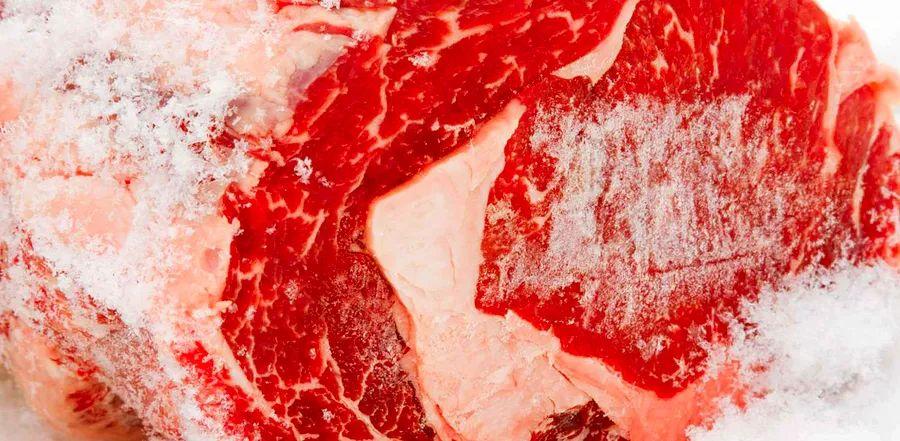The Worst Ways to Defrost Meat and Seafood, According to a Chef

From last-minute meals to budget-friendly grocery shopping, we all store meat and seafood in the freezer for convenience. While it’s practical to keep frozen proteins on hand, the challenge is remembering to thaw them properly before cooking. So, what’s the best way to thaw them out?
Spoiler: There’s definitely a best way. But there are also some far worse options!
I spoke with Chef Britt Rescigno, co-owner and chef at Communion Bay Supper Club, who has appeared on Food Network’s 'Chopped,' 'Chopped Champions,' and 'Tournament of Champions.' She shares the common mistakes people make when thawing frozen meat and seafood. Rescigno explains the least effective thawing methods, why they can ruin the texture, flavor, and safety of your food, and offers her preferred techniques to properly thaw seafood and meat, ensuring a delicious meal with preserved quality.
The Biggest Mistakes People Make When Defrosting Meat and Seafood
If you’ve ever tuned into FX’s 'The Bear,' watched a Food Network competition, or simply chatted with industry professionals, you’re probably aware that chefs have plenty of stories to share. With years of experience, trial and error, and lots of kitchen wisdom, Chef Rescigno imparts some valuable advice by revealing the worst ways to thaw meat and seafood.
The Microwave
"The microwave is one of my least favorite methods," says Rescigno. "It’s terrible for proteins, drying them out and completely ruining the dish you’re trying to prepare." While technology might encourage us to use the 'thaw' button, Chef Rescigno warns that it doesn’t help—it actually harms the quality of your food. So maybe it’s time to rethink that microwave button! However, if you’re in the mood for a microwave meal, take a look at this tasty roundup!
The Hot Water Method
Rescigno points out several reasons she’s not a fan of the hot water method. "First, it promotes bacterial growth. Second, it cooks the outer layers of the meat while leaving the inside raw, ruining the overall quality of the dish." Nobody wants to risk food poisoning or end up with a half-cooked meal. Keep reading to discover the real secret to thawing frozen meat underwater.
Defrosting at Room Temperature
This method is a definite no-go when it comes to health and safety. "You're basically throwing a bacteria party, and no one wants to attend that," warns Chef Rescigno. And did you know it’s also unsafe to cook frozen meat directly in a slow cooker?
The Best Ways to Defrost Meat and Seafood
There’s always room to refine your skills in the kitchen. Chef Rescigno offers expert advice on her favorite, most effective techniques for safely defrosting meat and seafood—and it’s simpler than you might think!
How to Safely Defrost Meat
The key to thawing meat is timing and preparation. "The best way to defrost large cuts of meat is to plan ahead and let them thaw slowly in the refrigerator. It’s the safest and most effective method," says Rescigno. Set a reminder to place your meat in the fridge before bed tonight, and you’ll be ready to cook a perfectly thawed meal by dinner time tomorrow!
How to Properly Thaw Seafood
When thawing seafood, Rescigno suggests returning it to water. "For seafood, I prefer placing it in a bowl in the sink and running cool water over it continuously until it’s fully thawed." This method thaws seafood faster than warm water and avoids cooking the outside or fostering bacteria growth.

Emily Laurae / Southern Living
The Best Way to Freeze Proteins
To freeze or not to freeze? It’s a question I often find myself asking when deciding whether to stash protein in the freezer. Chef Rescigno isn’t fond of freezing delicate fish like flounder, halibut, or even cod, as they develop a mealy texture she dislikes. However, she has no problem freezing other proteins. "If properly stored and thawed, most people won’t even notice a difference," she says.
While Rescigno supports freezing meat and seafood, she emphasizes the importance of how it’s done. Her top recommendation? Vacuum sealing proteins. This method locks in flavor, saves space, and when properly thawed after a few months, they usually taste great. She warns that improper storage is what causes that 'freezer-burn' taste that no one wants.
Chef Rescigno encourages cooks of all skill levels to embrace the process of learning in the kitchen and to treat ingredients with care, offering love and respect in every dish. Having enjoyed her cooking myself, I can confirm she practices what she preaches. She advises, "Take care of your proteins, and you’ll always have a delicious meal. That’s a lesson for the kitchen—and life!"

1

2

3

4

5
Evaluation :
5/5